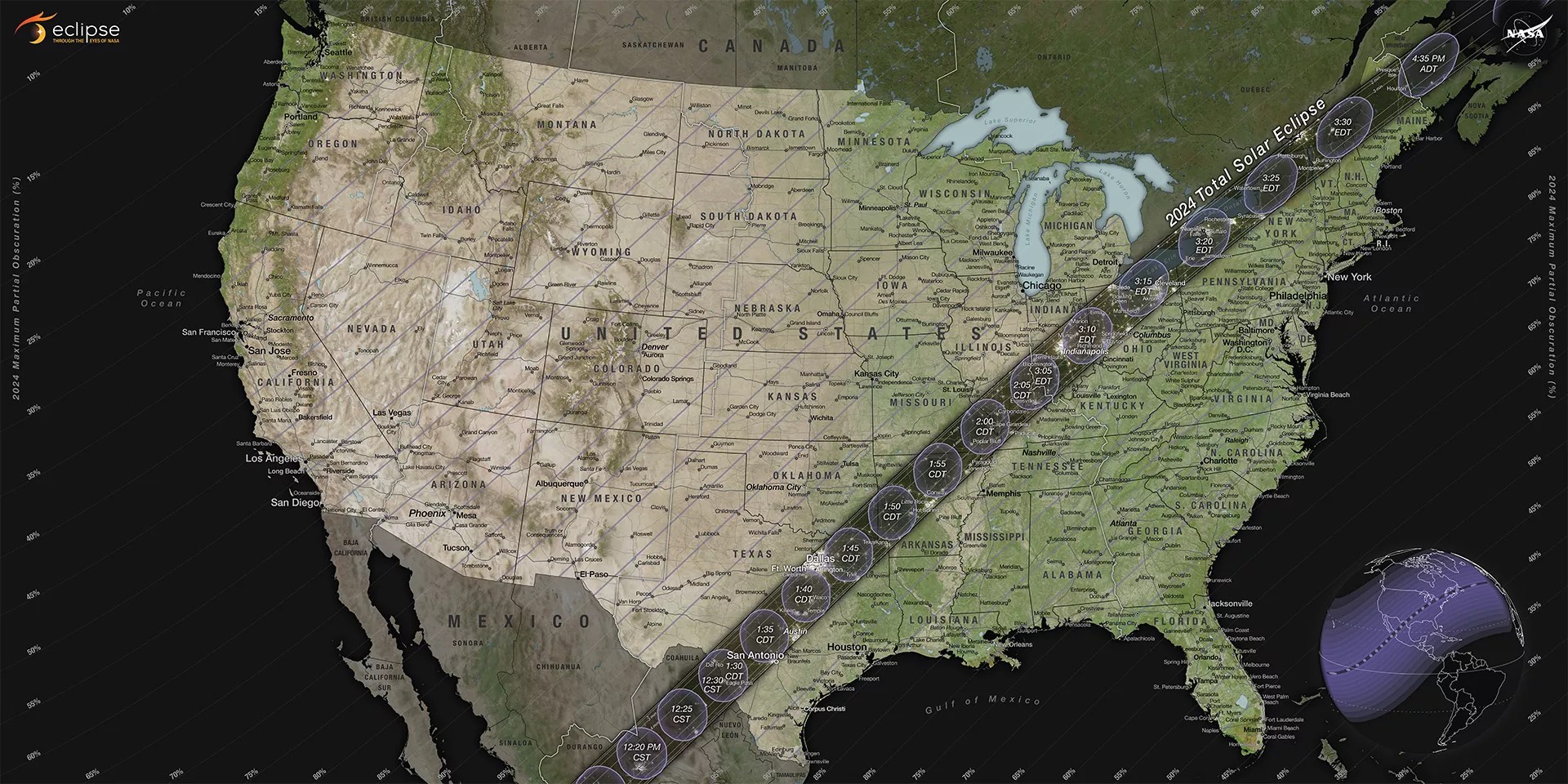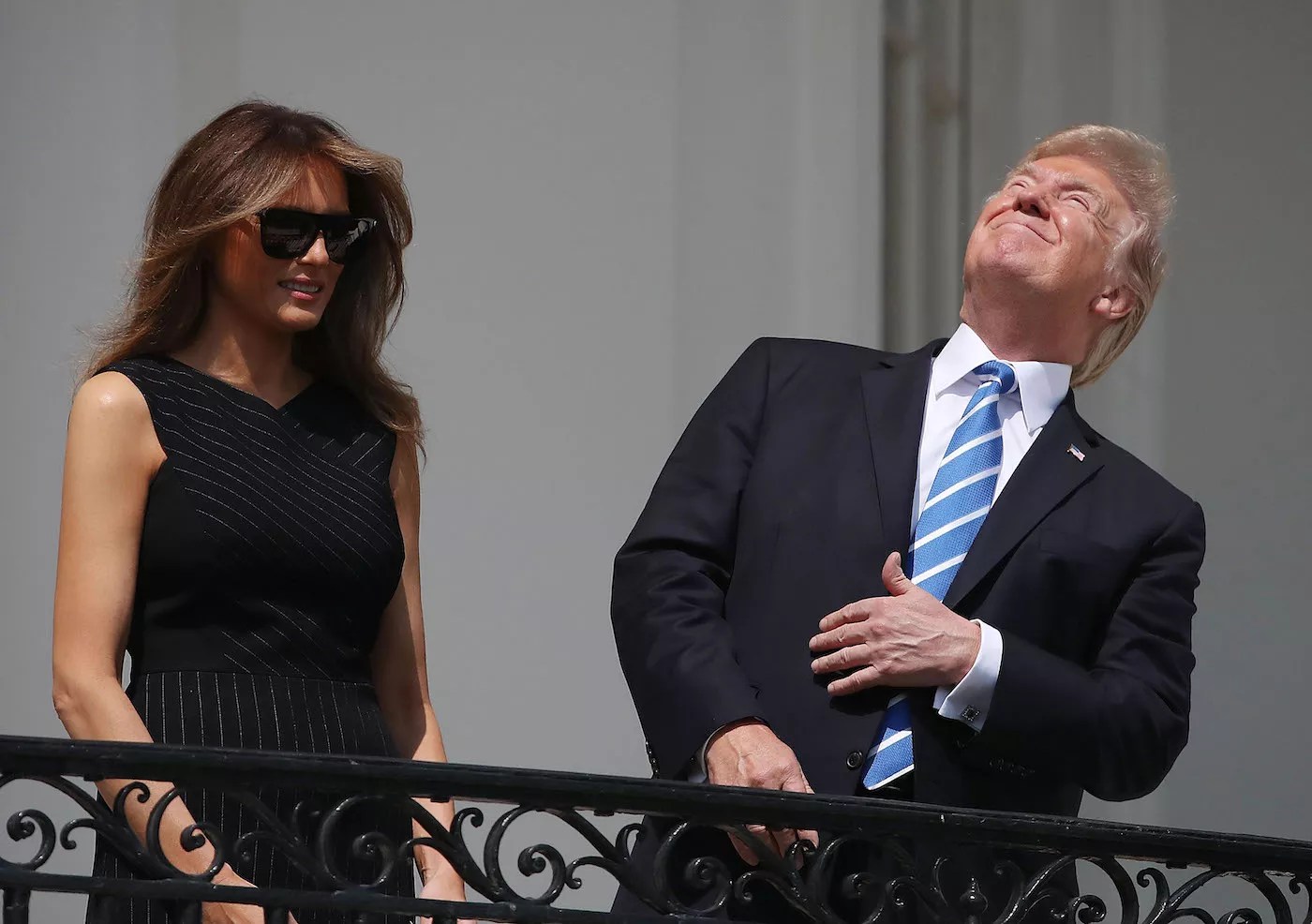
Photo by Space Frontiers/Getty Images

Audio By Carbonatix
So you live in Miami and you don’t want to miss the upcoming solar eclipse? We can’t blame you: According to NASA, after the total solar eclipse on April 8, 2024, the next time such an event will be viewable from the contiguous United States will be on August 23, 2044.
For the math-averse, that’s 20 years.
That’s the bad news – or some of it, anyway. The other bad news is that no one in Miami’s going to be able to see the moon completely block our view of the sun, because we’re not in the so-called path of totality. No one in Florida is. Or in Georgia, Alabama, or Mississippi, for that matter. So if you’re dead set on seeing the Earth get plunged into total darkness, you might want to book your travel arrangements now. (Eyeballing the map below, we suggest a flight to Nashville or Memphis plus a car rental.)

The path of totality and partial contours crossing the U.S. for the 2024 total solar eclipse occurring on April 8, 2024.
When to See the Solar Eclipse in Miami, Fort Lauderdale, and West Palm Beach, Florida
The good news is that just because the homebodies among us won’t witness firsthand the wonder of a total eclipse, that doesn’t mean we won’t see an eclipse, period. South Floridians will be treated to a partial solar eclipse – about 46 percent of the deal, to be more precise.
All you have to do is hope for a cloudless afternoon, arm yourself with eye protection, and look up starting a little after 1:47 p.m. EDT. That’s when the moon will take its first teensy bite out of the sun’s disk. (If you imagine the sun as a clock face, the eclipse will move from right to left, starting where four o’clock would be.) We’ll reach the max at 3:01 p.m., when 46.1 percent of the sun will be obscured by the moon.
Miami: Partial phase starts 13:47:41 EDT | Mid-eclipse 15:01:52 EDT
Fort Lauderdale: Partial phase starts 13:48:05 EDT | Mid-eclipse 15:02:30 EDT
West Palm Beach: Partial phase starts 13:48:32 EDT | Mid-eclipse 15:03:23 EDT
When to See the Solar Eclipse in Other Florida Cities
Drive north to, say, Orlando or Tampa, and you’re nearing 60 percent of totality. Got enough gas money to make it to Tallahassee and back? We’re talking 70 percent!
The further north you go, the later in the afternoon the eclipse will begin and end.
Fort Myers: Partial phase starts 13:44:04 EDT | Mid-eclipse 14:59:57 EDT
Jacksonville: Partial phase starts 13:47:44 EDT | Mid-eclipse 15:05:14 EDT
Orlando: Partial phase starts 13:46:55 EDT | Mid-eclipse 15:03:29 EDT
Tallahassee: Partial phase starts 13:42:11 EDT | Mid-eclipse 15:00:47 EDT
Tampa: Partial phase starts 13:43:38 EDT | Mid-eclipse 15:00:38 EDT
Frost Science Special Eclipse Programming
Want to nerd out all day? The Phillip and Patricia Frost Museum of Science in downtown Miami (1101 Biscayne Blvd., 305-434-9600; frostscience.org) is offering a full afternoon of programming around the event, beginning at noon.

Never forget that time President Donald Trump demonstrated how not to view a total solar eclipse.
Photo by Mark Wilson/Getty Images
Safeguarding Your Vision
We aren’t kidding about this. You really can go blind.
Per NASA: “When watching a partial or annular solar eclipse directly with your eyes, you must look through safe solar viewing glasses (‘eclipse glasses’) or a safe handheld solar viewer at all times. Eclipse glasses are NOT regular sunglasses; regular sunglasses, no matter how dark, are not safe for viewing the Sun. Safe solar viewers are thousands of times darker and ought to comply with the ISO 12312-2 international standard.”